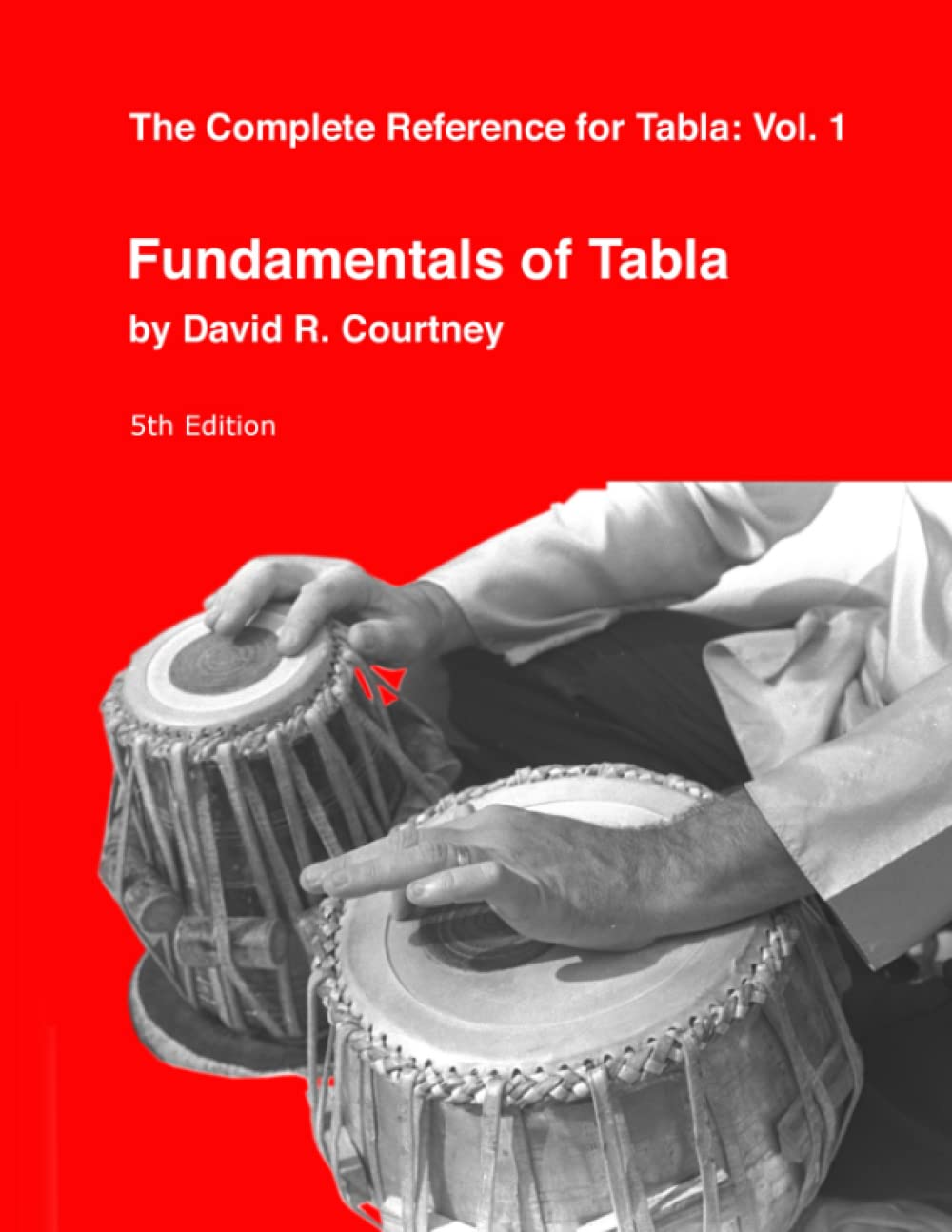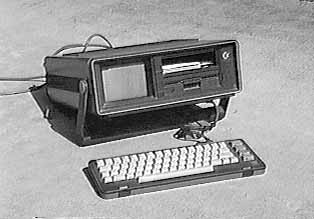NOTE – This article was originally published in Percussive Notes, Volume 30, number 4, April 1992 page 27-29.
Reprinted by permission of the Percussive Arts Society, Inc., 701 N.W., Ferris, Lawton, OK 73507
Introduction
Tabla has been around for several centuries. In this period of time a fairly standard approach to its pedagogy has developed. Unfortunately, many things have changed since the tabla first rose in popularity many years ago. Indeed many of the mechanisms that previously insured high standards have emerged to become major impediments to the effective instruction of this instrument. This is all due to the tremendous cultural differences between 18th century Northern India and today’s modern world.
A review of the traditional pedagogy with an objective eye towards the relevance in today’s Western society is an effective approach. An enlightened educational philosophy combined with use of new technology creates an optimum educational environment.
Background
India has a very long and very rich tradition of musical pedagogy. Music instruction is based upon the oral tradition. As such, the tradition of teacher and disciple (Guru Shishya Parampara) has been the cornerstone of musical training for thousands of years (Courtney 1980:7). It is a system which has worked in maintaining a very high degree of musicianship.
Unfortunately, this system has periodically been abused. Socioeconomic reasons have often forced musicians to take measures to keep outsiders and occasionally their own students from learning and understanding certain key concepts. This obscurantism has taken many forms. Occasionally, fundamental concepts were wrapped in unnecessary mysticism. Quite often students would not be taken unless unrealistic monetary gifts were made (Guru dakshana). Numerous occasions are shown where only members of a particular caste were taken as students. Women were frequently excluded from the process. To make matters worse, there are numerous instances where certain information was only given to the teacher’s own sons (Neuman 1980:198).
These mechanisms are clearly an impediment in the modern world. They may have had a positive function in the old days by assuring that only the most dedicated, resourceful, and devoted of students would make it through the very long period of apprenticeships (between 10 and 20 years) (Kippen 1988:113). Today, such attitudes only have a negative impact upon the system.
Several centuries of obscurantism have had an interesting affect upon the development of tabla. The impedance to the free flow of musical information from both psychological and geographical reasons created a system known as “gharana.” Gharana literally means, “house.” Each geographical area literally developed its own style of tabla. The compositional types and nomenclature varied considerably from place to place and even artist to artist. It has only been within the last fifty years that advances in communication and transportation have erased many of the differences.
| IF YOU ARE INTERESTED IN TABLA, THIS BOOK IS FOR YOU |
|---|
This is the first volume of the most complete series on the tabla. Fundamentals of Tabla It is available around the world. Check your local Amazon for pricing. |
Approach To Effective Teaching
The first step towards an improved pedagogy must be the adoption of an enlightened philosophy. One should be able to sift through all of the cultural baggage, which has come with one’s training, and objectively judge the relevance and propriety of each point.
The basic teacher-disciple relationship is a case in point. The one-to-one relationship is something that appears to be indispensable. Even though Western pedagogy has tried to eliminate this as a matter of general principle, musicians have seen that there is no substitute for personal study under a master. This is going to be especially true in Indian music where the improvisational nature makes many points impossible to reduce to a mechanical process.
A teacher must then be willing to teach. He (or she) must be willing to take any student who is willing to learn and not place unnecessary obstacles in their way. This may sound obvious, but it is not as easy as it seems, for one must also learn to recognize the obstacles.
The gharana is one such obstacle that is not so obvious. If one does not make an attempt to transcend the concepts of one’s particular tradition, the students may become permanently crippled by a narrow, parochial approach to the subject. The concept of “my guru said it, so it must be true” may have dangerous repercussions when it comes to instilling a broad understanding of the subject.
One must not place unnecessary financial burdens upon the students. The extreme difficulty of tabla means that a tremendous amount of time must go into it. One should be willing to teach at a minimum price if the necessary interaction between student and teacher is to take place.
One must also take an orderly approach to teaching. Traditional approaches were often haphazard. Often there was an excessive emphasis on memorization of material without supporting this with a clear understanding of its significance. It is always better if the student has a clear idea of what concepts or techniques he is supposed to be getting from the material.
New Tools
We must also be sensitive to the new tools at our disposal. One of the most important yet least recognized is a good system of notation. This is not really new. The Bhatkhande system of notation has been around for many decades and is the cornerstone of most of the literature on the subject. Unfortunately, the tradition of downgrading the notation has resulted in many students adopting a very careless approach, with the result that it is not unusual to see students who cannot even read their own notes after a year.
It is a tendency in this country to teach students with an English notation. This is a very great disservice for two reasons. The first is that the student fails to grasp certain important distinctions. For instance the English “Ta” fails to make the distinction between ““, “
“, and “
“. Second and perhaps most important is that the student becomes cut off from the large amount of material which has been published in India. A small amount of time invested in teaching good notation pays its dividends many times over.
The use of audiovisual equipment is another area which is very important to a modern approach to teaching. Audio tapes have been available for some time (Gottlieb 1973), and work is even under way at the Maharishi International University to explore the use of videotapes in the instruction process.
Perhaps no area of work may be more revolutionary than the applications of computers to the process (Courtney 1990). I have been using computers to some degree or another for the last four years with very encouraging results. The natural interactive nature gives them a power that can not be equaled by other audio/visual means. Computers appear to have the greatest application in two areas. The first is automatic lahara generation and the second is the processing and retrieval of compositions from a database.
Lahara generation is a process which is very well suited to the computer. A lahara is a small repetitive melody that is used to accompany a tabla. This is most used in tabla solos, but is very important when a student is working on any fixed composition. If there is any deviation from the correct rhythm, then the lahara with its mechanically perfect beat shows the imperfection with an almost embarrassing clarity. This is very much like a metronome except the lahara is more consistent with performance practice. After all, a tablist will play with a lahara but nobody will play with a metronome.
Figure 1 shows a picture of an SX-64 by Commodore Business Machines, a small 8-bit computer which becomes a very good lahara generator at a street price of approximately $300. When equipped with the necessary software it has bilingual operation (Hindi/English) and quite good sound capabilities (Courtney 1989).
Figure 1: SX-64 Commodore
The storage and retrieval of fixed compositions is another area where the computer may become an ideal tool. The computer has shown itself to be an effective tool in the areas of alphanumeric data processing. Tabla notation may be reduced to an ASCII-like code and handled in the same way.
Figure 2 is the screen taken from the author’s Macintosh. It shows the notation for a particular theka. This particular case shows how the tabla notation may be reduced to an ASCII-like code and processed with a standard word processor. Such pseudo-ASCII code may be processed with word processors, databases or virtually any application imaginable.
Figure 2: Screenshot of author’s Macintosh
Conclusion
Traditional approaches to teaching tabla are proving very ineffective in today’s world. Developing new approaches requires major changes. However, there is not any one key to effective pedagogy. An open approach, unfettered by parochial concepts and a strong desire to teach are the prime prerequisites. Additionally, the effective use of audio cassettes, video cassettes, and especially the computer prove themselves to be powerful tools in handling and conveying complicated musical material.
Works Cited
Courtney, David R.
1980 Introduction to Tabla. Hyderabad: Anand Power Press.
1989 An Indian Music Specific Audio Driver. Journal of the Acoustical Society of India. Calcutta:ASI
1990 A Low-cost System for the Computerization of North Indian Classical Music. International Institute for Advanced Studies (Greenwich University) (Dissertation available through UMI order number LD01730)
Gottlieb, Robert S.
1973 42 Lessons for Tabla. New York: Folkway Records (Phonorecording).
Kippen, James
1988 The Tabla of Lucknow. Cambridge: Cambridge University Press.
Neuman, Daniel M.
1980 The Life of Music in North India. Detroit: Wayne State University Press.


